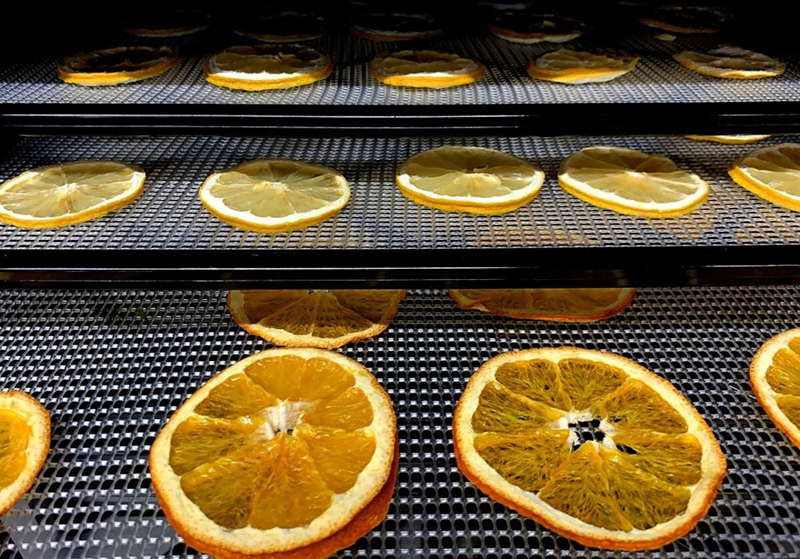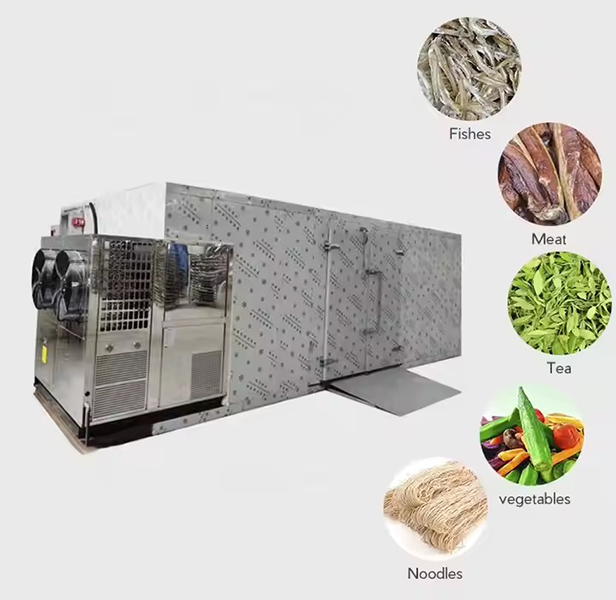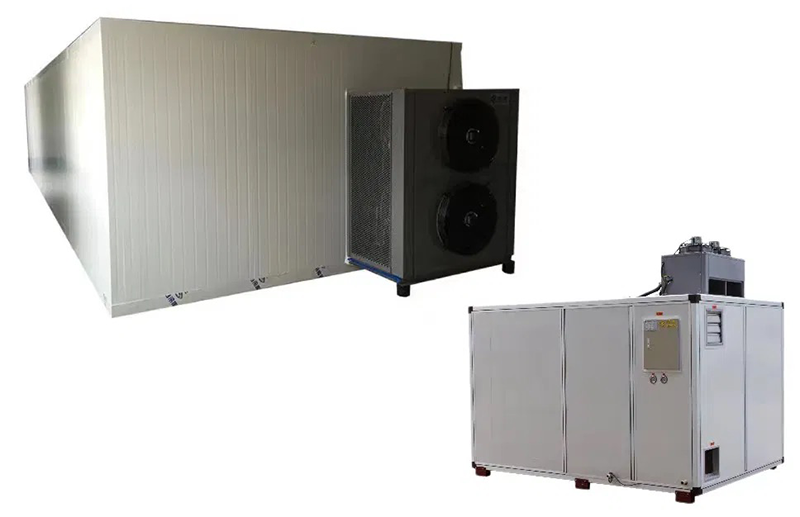
Content Menu
● Introduction
● Understanding Food Drying Technologies
>> The Role of Energy Efficiency
● Condenser Dryers
>> How They Work
>> Energy Usage
>> Advantages
>> Disadvantages
● Heat Pump Dryers
>> How They Work
>> Energy Usage
>> Advantages
>> Disadvantages
● Energy Comparison Between Condenser and Heat Pump Dryers
● Practical Considerations for Food Manufacturers
>> Product Type
>> Production Volume
>> Space Requirements
>> Maintenance Requirements
● Case Studies in Food Processing
>> Case Study 1: Fruit Drying Facility
>> Case Study 2: Vegetable Processing Plant
● Future Trends in Food Drying Technologies
>> Smart Technology Integration
>> Improved Insulation Materials
>> Sustainable Practices
● Conclusion
● FAQ
>> 1. What is the main difference between condenser and heat pump dryers?
>> 2. Are heat pump dryers worth the higher initial investment?
>> 3. Can I use both types of dryers for all food products?
>> 4. How do I determine which dryer is right for my business?
>> 5. What are some common maintenance issues with these dryers?
Introduction
In the world of food processing, drying is a crucial step that significantly impacts the quality and shelf-life of food products. With the increasing demand for energy-efficient solutions, manufacturers are turning their attention to advanced drying technologies. Among these, condenser dryers and heat pump dryers have gained popularity due to their energy-saving capabilities. This article explores the differences between condenser and heat pump dryers in terms of energy usage, efficiency, and overall performance in food drying applications.

Understanding Food Drying Technologies
Food drying is a method used to preserve food by removing moisture content. This process not only extends the shelf life of products but also enhances flavors and maintains nutritional value. Various drying technologies are available, including:
- Conventional Dryers: Utilize direct heat sources.
- Condenser Dryers: Use a heat exchange system to condense moisture.
- Heat Pump Dryers: Employ a refrigeration cycle to recycle heat.
The Role of Energy Efficiency
Energy efficiency is a critical factor in selecting a drying system. It affects operational costs, environmental impact, and product quality. Understanding how different dryer types consume energy can help businesses make informed decisions.
Condenser Dryers
How They Work
Condenser dryers operate by drawing in humid air from the drying chamber. The moisture-laden air passes through a heat exchanger where it is cooled down, causing the water vapor to condense into liquid form. This liquid is then collected in a tank or drained away.
Energy Usage
- Electricity Consumption: Typically consumes more electricity than heat pump dryers.
- Heat Recovery: Limited heat recovery capabilities lead to higher energy losses.
- Efficiency Ratings: Generally rated lower on energy efficiency compared to heat pump models.
Advantages
- Lower Initial Cost: Generally more affordable upfront.
- Simplicity: Easier to install and maintain.
- Quick Setup: Ideal for small-scale operations or businesses just starting with food drying.
Disadvantages
- Higher Operating Costs: Due to increased energy consumption.
- Less Efficient: Not ideal for large-scale operations requiring continuous drying.
- Potential Quality Issues: Higher temperatures may degrade sensitive food products.
Heat Pump Dryers
How They Work
Heat pump dryers utilize a refrigeration cycle to extract moisture from the air inside the drying chamber. They work by transferring heat from one place to another, using refrigerants to absorb moisture and release it outside while recycling the heat back into the system.
Energy Usage
- Electricity Consumption: Significantly lower than condenser dryers.
- Heat Recovery: High efficiency due to effective heat recovery mechanisms.
- Efficiency Ratings: Often rated as A+++ or higher in energy efficiency.
Advantages
- Cost Savings: Lower operational costs due to reduced energy consumption.
- Environmentally Friendly: Less energy usage translates to a smaller carbon footprint.
- Versatility: Suitable for various food products requiring specific drying conditions.
- Better Temperature Control: Maintains optimal temperatures for sensitive foods, preventing nutrient loss.

Disadvantages
- Higher Initial Cost: More expensive upfront investment.
- Complexity: Requires more maintenance and technical knowledge.
- Longer Drying Times for Certain Products: Some products may take longer to dry compared to conventional methods.
Energy Comparison Between Condenser and Heat Pump Dryers
To better understand the differences in energy usage between these two types of dryers, we can compare them based on several key factors:
| Feature | Condenser Dryer | Heat Pump Dryer |
| Initial Cost | Lower | Higher |
| Electricity Consumption | Higher | Lower |
| Heat Recovery Efficiency | Limited | High |
| Operating Costs | Higher | Lower |
| Environmental Impact | Greater | Lesser |
Practical Considerations for Food Manufacturers
When selecting a dryer for food processing, manufacturers must consider several practical factors beyond just energy usage:
Product Type
Different food products require varying drying temperatures and times. Heat pump dryers offer greater flexibility for sensitive items like fruits and vegetables. For instance:
- Fruits: Require lower temperatures to preserve flavor and nutrients; heat pump dryers excel here.
- Vegetables: May tolerate higher temperatures; both dryer types can be effective depending on specific needs.
Production Volume
For large-scale operations, the initial investment in heat pump technology may be justified by long-term savings on energy bills. Businesses processing large quantities of food will benefit from the efficiency of heat pump dryers, which can handle high volumes without significantly increasing energy costs.
Space Requirements
Heat pump dryers may require more space due to their complex systems, while condenser dryers are generally more compact. Manufacturers should evaluate their facility layout and available space before making a decision.
Maintenance Requirements
Regular maintenance is essential for both types of dryers but varies in complexity:
- Condenser Dryers: Typically require less technical knowledge for maintenance but still need regular cleaning of filters and condensate tanks.
- Heat Pump Dryers: Require more technical expertise for maintenance tasks such as checking refrigerant levels and ensuring proper airflow within the system.
Case Studies in Food Processing
Several food processing companies have successfully implemented both condenser and heat pump dryers.
Case Study 1: Fruit Drying Facility
A fruit drying facility switched from a condenser dryer to a heat pump dryer. The results showed:
- 30% reduction in energy costs
- Improved product quality with better flavor retention
- Increased production capacity due to faster drying times
- Enhanced ability to dry delicate fruits without compromising quality
Case Study 2: Vegetable Processing Plant
A vegetable processing plant opted for a heat pump dryer despite the higher initial costs. The benefits included:
- Significant savings on electricity bills
- Lower environmental impact
- Enhanced versatility for different vegetable types
- Ability to maintain consistent temperature control during drying processes
Future Trends in Food Drying Technologies
As technology advances, we can expect further developments in both condenser and heat pump dryer designs. Key trends include:
Smart Technology Integration
The integration of smart technology into drying systems allows for real-time monitoring and control of temperature and humidity levels. This leads to optimized drying processes that enhance product quality while minimizing energy consumption.
Improved Insulation Materials
Advancements in insulation materials will improve the thermal efficiency of both dryer types, further reducing energy usage and operating costs.
Sustainable Practices
With increasing awareness of environmental issues, manufacturers are focusing on sustainable practices. This includes utilizing renewable energy sources for powering dryers and implementing recycling systems that minimize waste during food processing.
Conclusion
In conclusion, both condenser and heat pump dryers have their unique advantages and disadvantages when it comes to energy usage in food drying applications. While condenser dryers may be more affordable initially, heat pump dryers offer superior energy efficiency, cost savings over time, and better product quality retention. As businesses continue to prioritize sustainability and operational efficiency, investing in advanced drying technologies like heat pumps may prove beneficial in the long run.

FAQ
1. What is the main difference between condenser and heat pump dryers?
Condenser dryers use electric heating elements and condense moisture from the air, while heat pump dryers recycle heat through a refrigeration cycle, making them more energy-efficient.
2. Are heat pump dryers worth the higher initial investment?
Yes, although they have a higher upfront cost, their lower operating costs and greater efficiency can lead to significant savings over time.
3. Can I use both types of dryers for all food products?
While both can be used for various foods, heat pump dryers are generally better suited for sensitive products that require specific drying conditions.
4. How do I determine which dryer is right for my business?
Consider factors such as your production volume, type of food products being dried, space availability, and long-term energy cost savings when making your decision.
5. What are some common maintenance issues with these dryers?
Common maintenance issues include cleaning filters, checking refrigerant levels (for heat pumps), and ensuring proper airflow within the system.











